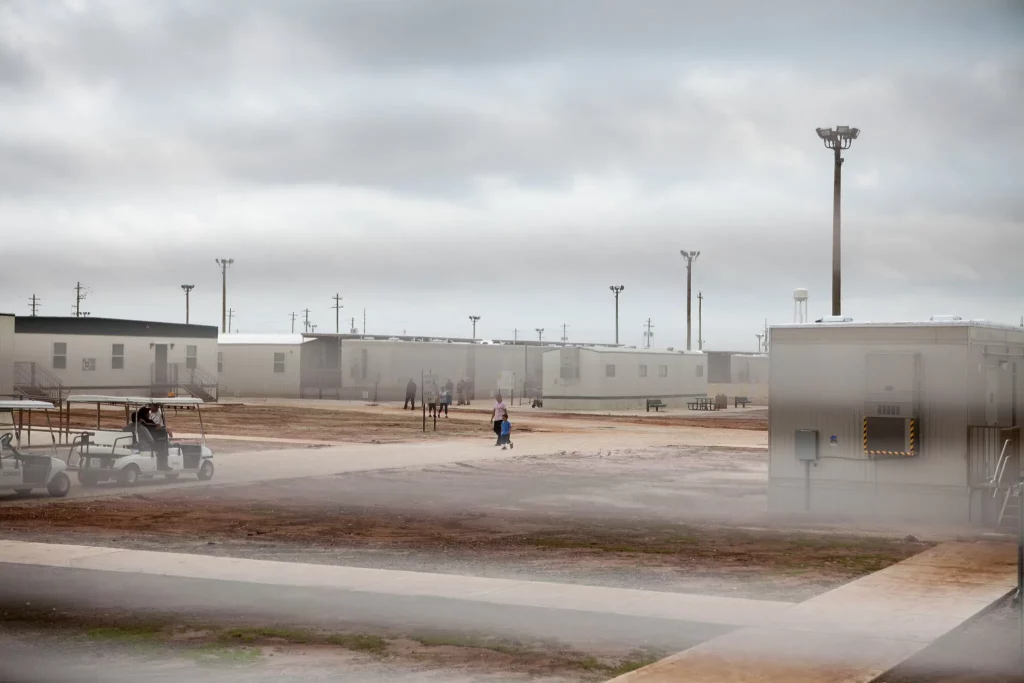In a sweeping move that could reshape how immigration is enforced across the United States, the Trump administration has issued a massive request for proposals to contractors. This request aims to secure new detention facilities, transport services, medical care, guards, and administrative operations — potentially worth as much as $45 billion over the next two years. This would represent a huge leap from the current Immigration and Customs Enforcement (ICE) detention budget of around $3.4 billion.
Although ICE does not yet have that funding in hand, the recent Republican-approved budget plan has outlined up to $175 billion for immigration-related activities over a decade. The proposal sets the stage for ICE to quickly spend any new funds as they arrive.
Heidi Altman from the National Immigration Law Center described the move as a plan to fundamentally change the way immigrants are detained in the U.S., warning that the groundwork is being laid for mass incarceration of undocumented immigrants.
Why does ICE want to expand so fast?
Tom Homan, Trump’s border czar, has stressed the need for more detention space in order to meet deportation targets. In February, he stated plainly: “The more money we have, the more beds we can buy.” ICE’s current population is already over its limits — with nearly 48,000 people detained in March, far above the 41,500 average set by Congress.
To streamline the expansion process, ICE issued what’s called a blanket purchase agreement. Rather than requesting bids for specific facilities in specific locations, this approach creates a list of pre-approved vendors who can be called upon as funding is made available.
How will detention standards change?
Notably, the proposed facilities under this new plan will not need to meet the same standards currently required of large ICE contractors. Instead, they can operate under the looser rules often used in county jails, where oversight is lighter and medical services are limited. Immigrant advocates fear that these lower standards could worsen existing problems such as poor medical care and overcrowding — issues already reported at current facilities.
Adding to concerns, the administration has also invited the Department of Defense to join the plan, potentially using military bases for long-term detention. This includes facilities like Guantánamo Bay, which has set up new tents but hasn’t yet housed migrants.
What’s the private sector’s role in this?
Private detention firms like CoreCivic and Geo Group appear to be closely aligned with the administration’s plans. CoreCivic recently secured a $246 million contract to reopen a family detention center in Texas, while Geo Group landed a $1 billion, 15-year deal to run a facility in Newark.
According to industry analysts, these companies are prepared and were likely given early signals. Damon Hininger, CoreCivic’s CEO, revealed in February that his firm was in daily talks with the administration. These companies and their investors see a financial windfall coming — though critics argue that privatizing immigration enforcement reduces transparency and accountability.
Joe Gomes, a financial analyst who tracks detention firms, summed it up: “The Trump administration is putting money where their mouth is. This will be a major gain for private detention operators.”
What does this mean for immigrants?
While the Department of Homeland Security insists that detainees will be kept in “safe, secure and humane” conditions, history suggests otherwise. Even under stricter standards, oversight has failed to prevent deaths and poor treatment. Now, with fewer inspections and less government control, the risk of abuse may rise.
Former officials and immigrant advocates warn that this expansion plan prioritizes speed and quantity over safety and fairness. The Office of the Immigration Detention Ombudsman, established to offer detainees support and accountability, has already been stripped of power under Trump.
This unprecedented funding push signals the Trump administration’s deep commitment to aggressive immigration enforcement. If fully funded, the plan would dramatically scale up the detention system, possibly at the expense of detainees’ health, rights, and dignity.

